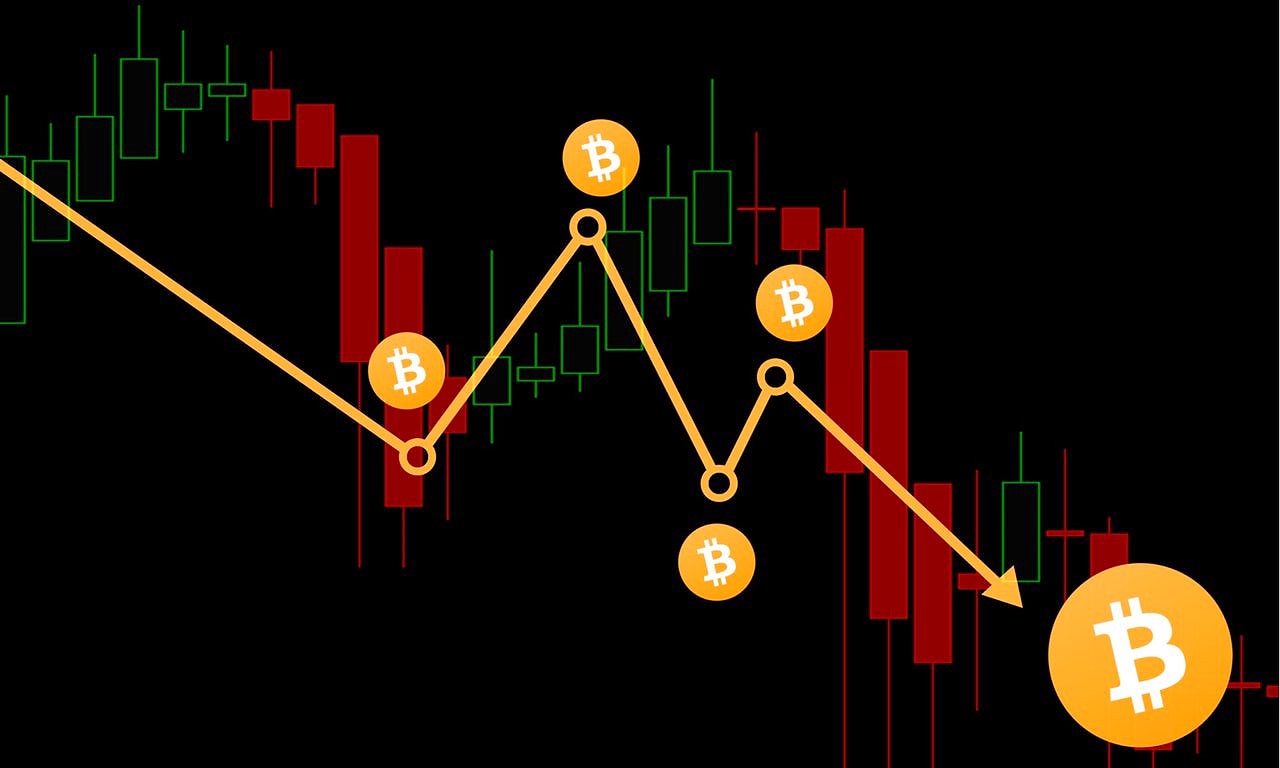
Volatility means random and regular fluctuations of the price that is basically not easy to predict. Bitcoin is one of the most fluctuating or volatile cryptocurrencies. Volatility not only lowers down the price but also gives sometimes a massive rise in the value. High volatility certainly gives a hint of high risk, at the same time, the potential to print out more money increases. With a disciplined approach or mindset, one can make a lot of profit despite the high volatility.
Why Does Bitcoin Fluctuate So Much?
A lot of factors play a role in deciding the price of a Bitcoin. The term high volatile or fluctuation is pointing out the fact that the price of Bitcoin is actively changing by those factors. There are two subcategories of factors- One is the reason for the rise of Bitcoin price and another is for the fall of the same. Because volatile or price fluctuation means two things; the sudden rise of price and the sudden fall of price.
In the last 30 days of writing, the volatility index of Bitcoin is 5.24%, whereas, in the last 2 months, it was 5.62%.
When do Bitcoin prices rise up?
1. Media Hype
When Media hypes a particular topic, the topic is then struck in the mind of a person.
Think about the time in 2017, when the price of Bitcoin was close to $20k and the headlines were made on Bitcoin on daily basis, in turn, it pulled out a lot of attention from the public.
2. Growing lack of confidence in real currencies.
A lot of people are losing their trust in fiat currencies and the reason for this is the regulation of the central authorities.
They fear if the authorities started printing out a lot of notes, which can result in hyperinflation, where the currency loses its value and become weak in front of other fiat currencies.
3. HODLing (Holding)
Some business tycoons hold a large proportion of Bitcoin which significantly contributes to the price or value due to the scarcity.
When a large proportion of Bitcoin is HODLed, the supply decreases and demand increases, due to which the price or value increases.
4. Supply Scarcity
As scarcity increases, demand increases at an equal pace. Due to an increase in demand, the price also rises. The limited supply of Bitcoin is 21 million. As the amount is halved after every four years, the new Bitcoins arriving in the market are nullified.
It has a limited supply as well Bitcoin halves every four years, which increases its value. As the supply decreases, demand increases, therefore, the value increases as it experiences a bull run.
5. Increasing commercial uses or adoption of Bitcoin
Some of the major retailers have adopted Bitcoin as a means for the transaction.
Some examples of companies that use Bitcoin as a medium to sell their products are Microsoft, Home Depot, and AT & T. Tesla is planning to implement the use of Bitcoin.
When do Bitcoin prices FALL down?
1. When a large proportion of Bitcoins is dumped
Bitcoin price plunges heavily when a large amount of it is sold in the market. It brings down the price of Bitcoin. On the other hand, if a large amount of Bitcoin is bought and HODLed, the price increases.
This is due to the supply and demand term. When the supply is more in the market, the price usually falls. While the price rises when a large proportion of cryptocurrency is HODLed by some rich investors.
The price of petroleum is ever-increasing since it's on the way to extinction, but if we find a high amount of petroleum from a newly discovered place, the price of petroleum will be reduced heavily.
Similarly, if a large amount of Bitcoin is available in the market after someone sold it off, the price gets reduced.
2. Impact of a sudden fall
When the price plunges sharply, many traders, in fear that they lose their money sell off all their Bitcoins. If a large number of Bitcoins are sold at a time, a deep drop in its price is followed after it.
Not everyone has a huge wallet so most probably, whenever they see a small decline in the price, they push the sell button.
This results in the fall of the price of Bitcoin. Though some traders don't lose their patience and keep holding the Bitcoin with the hope of a better day.
3. Media FUD
Negative news will generally cause people to sell their Bitcoin. Though experienced traders usually don't follow the news, they simply predict themselves by doing researches and analysis.
If Bitcoin started receiving negative feedback from the majority of the Media companies, then it may be possible that Bitcoin would lose its price to around a thousand dollars, or even less than a hundred.
4. Increasing distrust against Bitcoin
Many people don't trust digital currency due to the following reasons:
1. Not regulated by central authorities.
2. Don't trust digital kinds of stuff.
3. They believe physical/fiat currencies are much safer.
4. Fear of losing the money as central authorities won't take any action against it.
Frequently asked questions:
What is volatility?
Volatility is the degree to how much the price of a financial asset varies over time.
Why is volatility meaningful?
Volatility implies that an asset is risky to hold, on any given day, its worth may go uphill or downhill considerably. The more volatile or fluctuating an asset is, the more extra people will want to restrict their vulnerability to it, both by simply not holding it or by hedging. Volatility also increases the cost of hedging, which is the main giver to the price of merchant duties. If Bitcoin volatility reduces, the cost of switching into and out of Bitcoin will decrease as well.

